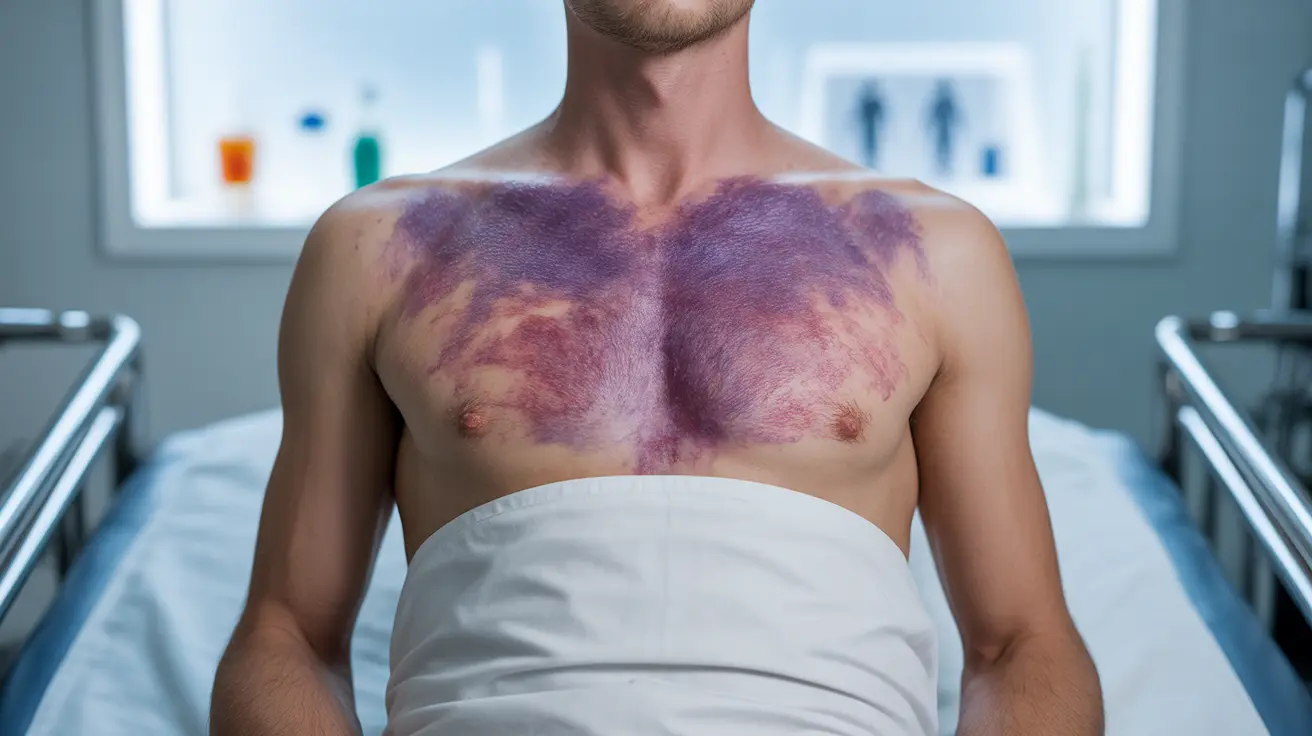When receiving vancomycin treatment, some patients may experience a distinctive skin reaction known as vancomycin rash or Red Man Syndrome. This condition requires prompt recognition and appropriate medical intervention to ensure patient safety and treatment effectiveness.
Understanding what a vancomycin rash looks like and knowing how to respond can help patients and healthcare providers manage this side effect more effectively. This comprehensive guide covers the essential aspects of vancomycin-related skin reactions, including appearance, treatment options, and prevention strategies.
Identifying a Vancomycin Rash
A vancomycin rash typically presents with several characteristic features:
- Bright red or deep pink coloring on the face, neck, and upper body
- Flushing that may feel warm to the touch
- Raised or flat areas of skin inflammation
- Potential spread to the chest and arms
- Accompanying itching or burning sensation
The reaction usually develops during or shortly after the antibiotic infusion, making timing an important diagnostic factor. The intensity can range from mild flushing to severe skin reactions requiring immediate medical attention.
Understanding the Cause
Vancomycin rash occurs due to the medication triggering histamine release in the body. This reaction is more common when the antibiotic is administered:
- Too quickly during infusion
- In higher doses
- Without proper premedication in susceptible patients
While not a true allergy, this reaction can be uncomfortable and concerning for patients. Understanding the underlying mechanism helps healthcare providers implement appropriate preventive measures.
Managing Vancomycin Skin Reactions
Immediate Response
When a reaction occurs during infusion, healthcare providers typically:
- Slow or temporarily stop the infusion
- Administer antihistamines if needed
- Monitor vital signs closely
- Document the reaction for future reference
Ongoing Treatment
For continued vancomycin therapy, treatment modifications may include:
- Slower infusion rates
- Preventive antihistamine administration
- Alternative antibiotic options when necessary
- Regular monitoring during subsequent doses
Prevention Strategies
Several approaches can help reduce the risk of developing a vancomycin rash:
- Proper infusion timing (typically over 60 minutes or longer)
- Premedication with antihistamines when indicated
- Regular monitoring during administration
- Careful dose calculation based on patient factors
Frequently Asked Questions
What does a vancomycin rash look like, and are there photos I can see for comparison?
A vancomycin rash typically appears as bright red or deep pink flushing, primarily affecting the face, neck, and upper body. While specific photos should be viewed under healthcare provider guidance, the rash commonly presents as an intense flush with possible raised areas and may be accompanied by warmth and itching.
How is red man syndrome (vancomycin flushing syndrome) treated after a rash develops?
Treatment typically involves stopping or slowing the vancomycin infusion, administering antihistamines, and monitoring symptoms. Once the reaction is controlled, the medication may be resumed at a slower rate with appropriate premedication.
Why does vancomycin sometimes cause a rash, and can other antibiotics do the same?
Vancomycin causes a rash due to histamine release in the body. While other antibiotics can cause various skin reactions, the specific "Red Man Syndrome" is most commonly associated with vancomycin. The reaction is typically related to infusion speed and individual sensitivity.
What should I do if I experience itching or redness during a vancomycin infusion?
If you experience symptoms during infusion, immediately alert your healthcare provider. They will assess the reaction, potentially slow or stop the infusion, and provide appropriate treatment such as antihistamines if needed.
Can red man syndrome be prevented, and how can I lower my risk of getting a vancomycin rash?
Prevention strategies include slower infusion rates, premedication with antihistamines when recommended, and proper dosing calculations. Informing your healthcare provider about any previous reactions to medications can also help them implement appropriate preventive measures.




